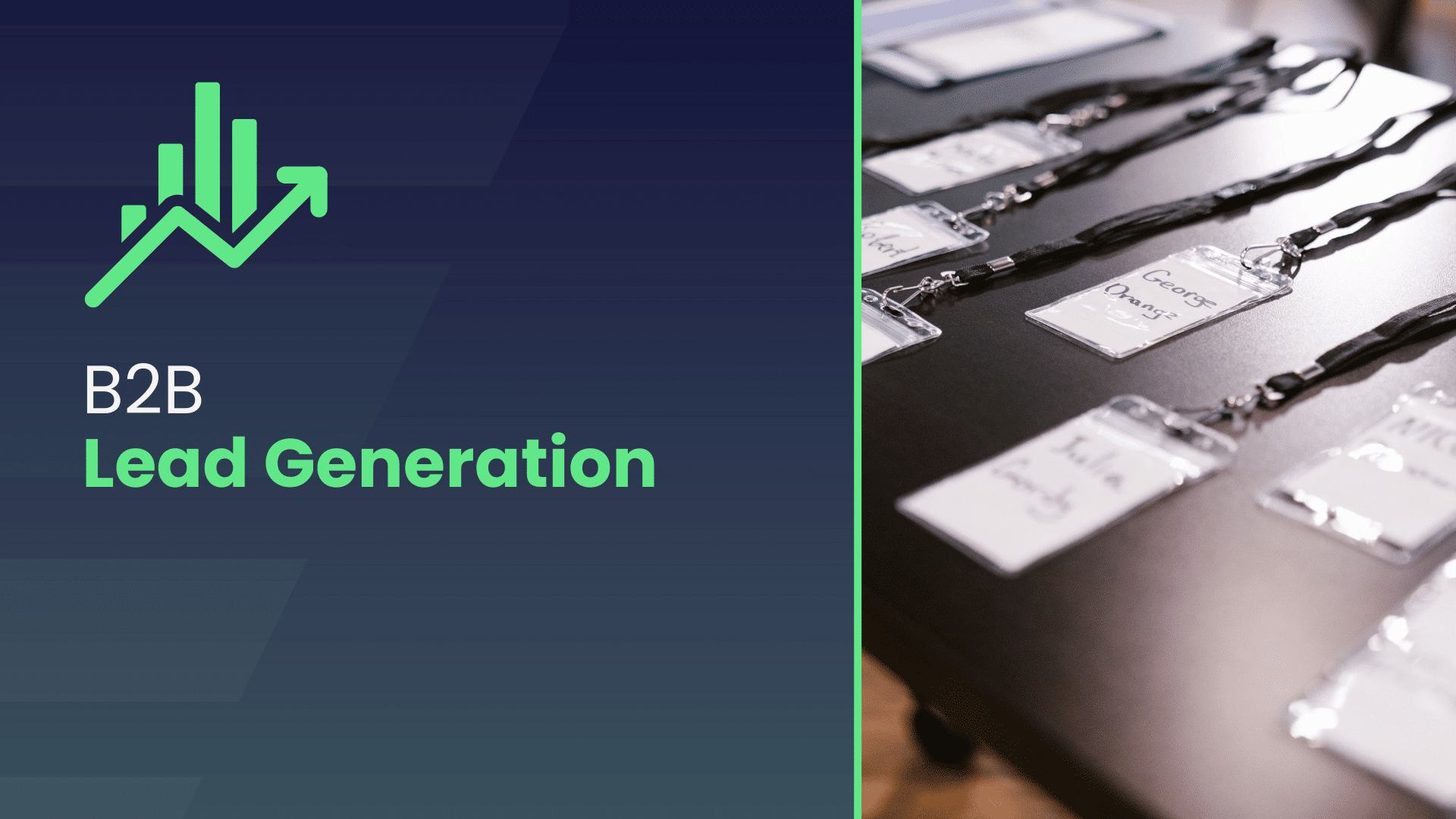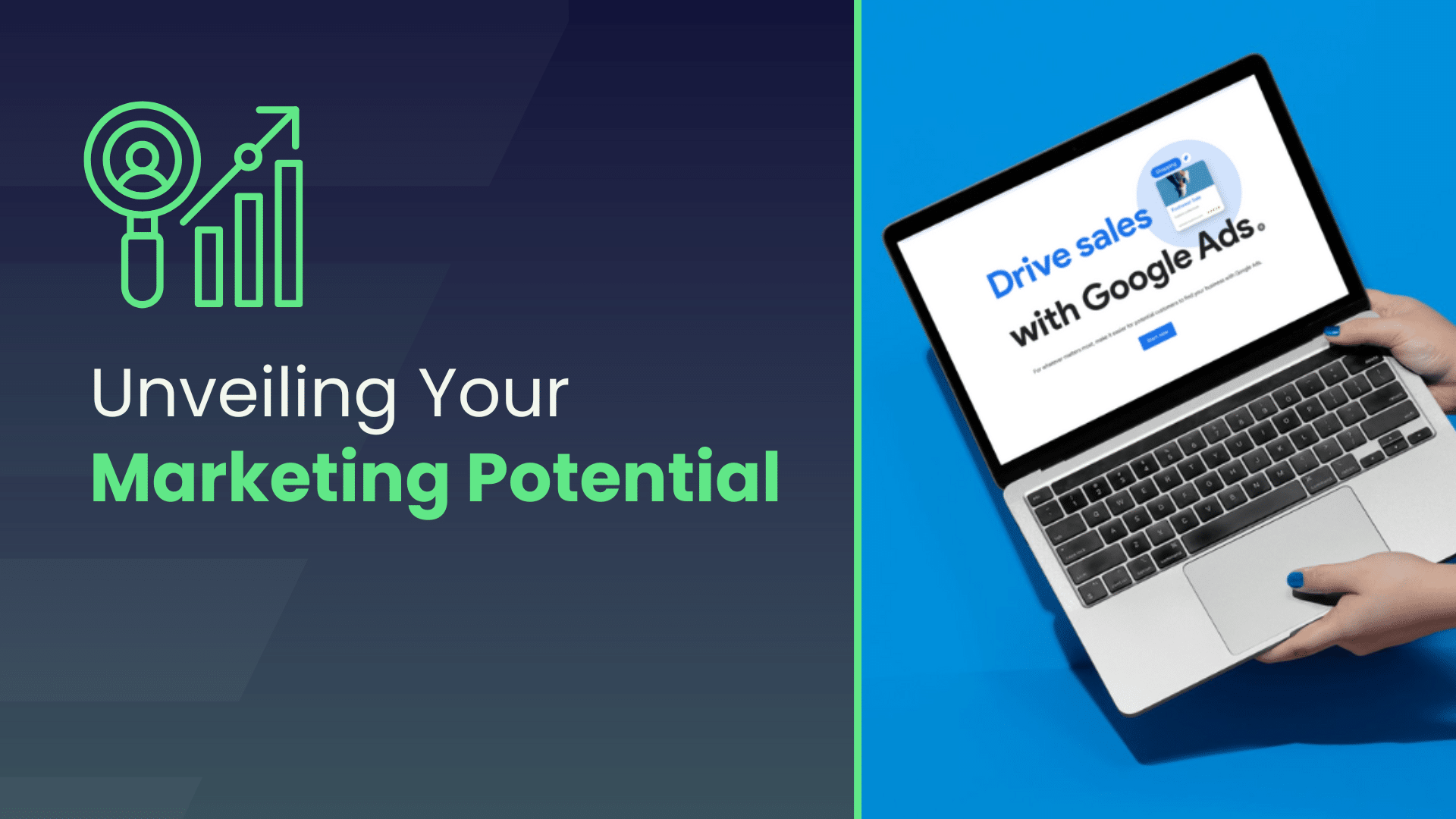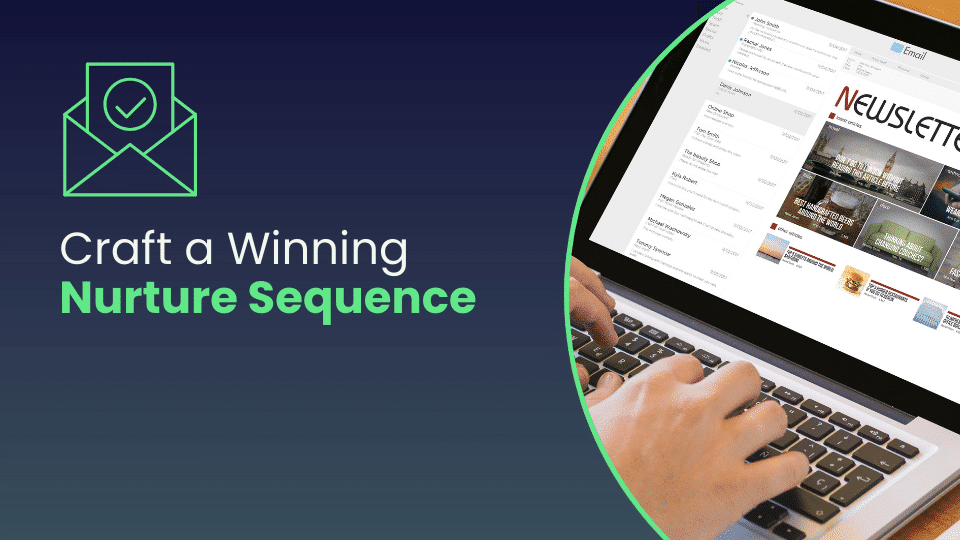Introduction
If you’re a business owner looking for strategies to grow your business, you’ve certainly heard about B2B Lead Generation.
What is B2B Lead Generation
B2B lead generation is the process of generating leads for a business that sells its products or services to another business. B2B stands for business to business, which is a type of business model where products and services are created with the sole intention of selling into other businesses.
This is opposed to other ways of selling such as B2C where a company sells to the general public. B2C in this context stands for business to consumer.
An example of a B2B product business is a manufacturing company that creates sheets of aluminium which are sold to other businesses who use the aluminium sheets to build their products.
An example of a B2B service business is a digital marketing company who builds websites and marketing campaigns for other companies with the goal of bringing in new qualified leads for their clients.
B2B can sometimes be referred to as B to B, b-to-b, or b2b in lower case; all of which mean the same thing business to business selling of products or services.
One Page
Lead Generation Plan
Find where to optimise your marketing, quantify ROI, reverse engineer acquisition costs, validate channels, and assess sales-marketing synergy.
Who conducts B2B Lead Generation?
A B2B Lead Generation process can be conducted by two main business functions:
- Sales team
- Marketing team or agency
There is often a natural tension that exists between sales and marketing within a company, but when it comes to generating new business, it is mutually beneficial that the two teams work very closely to align their strategies and reach the desired outcome – generate more qualified business leads.
There are clear boundaries between the roles of these teams, it is important to stress that while the sales team are responsible for the closing of deals, they may also need to be involved in outbound or business development activities to generate pipeline.
A high performing marketing team cannot be underestimated.
Businesses that wield the power of marketing hold strategic advantages within their niche and industry as they are often fuelled by a high number of inbound leads, not just outbound or sales generated leads.
Here’s a breakdown of the roles and strategies used by the Sales and Marketing teams on B2B Lead Generation.
Sales Team
The Sales team is responsible for the outbound sourcing and evaluating of prospects. Some traditional sales tactics for B2B lead generation include:
- Cold calling
- Networking
- Events
- Conferences
- Face-to-face meetings
- Product demonstrations
Sales teams utilise outreach to strengthen marketing messages, address prospects’ concerns, and guide leads through the process of becoming customers.
With sales teams working closer with marketing departments, businesses can achieve efficiency benefits with both aligning their efforts to reach new qualified leads, reduce sales cycles, increase close rates, and ultimately grow business revenue.
Marketing function
Marketing teams have evolved to play an extremely important role in B2B lead generation, acting as an engine that drives the entire process of attracting, nurturing, and converting inbound and potentially outbound leads.
Some tasks that marketing are involved in with B2B lead generation include:
- Website or landing page management
- Email marketing
- Nurture sequences
- Digital advertising such as: Google Ads, LinkedIn lead generation
- Social media posting
- Video marketing
- PR
- Event marketing
- Outside of home campaigns
- Traditional marketing (TV, radio, print)
- And many more
Marketers create and deploy these valuable touch points that not only attract prospects but also educates and engages them along their buying journey.
This helps guarantee that when leads are passed on to the sales teams, they are already educated and prepared for conversations, significantly improving the efficiency of the sales process.
Sales teams will often hold marketing in higher regard when the leads they are given and working are of a higher standard.
The marketing function of a business can be implemented through several approaches such as: internal team, agency partner, freelancers or contractors, or a mix of three.
Often times companies will employ a single senior marketing director, who utilises their experience to create the lead generation strategy, then works with outside partners such as an SEO agency or videographer to create campaign collateral.
The success of the B2B lead generation strategy relies on the close collaboration between the Sales and Marketing departments. Coordinating the efforts of both teams will help you create a seamless workflow that will help you optimise your B2B lead generation process.
B2B Lead Generation Tools and Software
With the ever-growing complexity of the online ecosystem, marketers and business owners are often challenged with new ways in which they can refine and manage their B2B lead generation process.
There’s no shortage of lead generation tools and software.
On the contrary, businesses can easily become overwhelmed by the amount of software solutions available to solve a problem.
Nevermind that software is often developed to address multiple problems, some of which you already have solutions for, making the decision even harder.
What a headache!
We’ve compiled the different categories of tools and softwares that we have used and proven to be of value to our team and clients into a the below:
CRM
CRM stands for Customer Relationship Management. These tools are particularly important as it allows you to track and manage all the interactions with your existing and potential customers.
A well utilised CRM becomes the hub of a businesses growth, managing new leads coming in, the sales process in action, and nurturing leads not ready to close now into warmer prospects when the time is right.
CRMs provide a feedback loop that is key for lead generation. By analysing the data of existing customers, teams can draw valuable insights of their target audience and adapt their lead generation process accordingly.
Most of the existing CRMs come with integration capabilities that allow marketers to connect this database with other advertising softwares that can look for similar audiences based on the existing data, and therefore increase the effectiveness of the B2B lead capture.
Hubspot is the go-to CRM in our books for lead generation.
We’re bias as we are Hubspot Partners, but we’ve chosen this path due to Hubspot’s robust set of features and support that mean businesses receive a high level of value for their investment.
Some of our other favourite CRMs to work with are:
Email scraping/list finding tools
Some software can save you hours of work simply by finding your prospects’ emails that are publicly available on websites, directories, etc.
Companies can build email lists and gather leads much faster with these tools however it is important to note that these practices are becoming less and less effective in time due to the sheer volume of businesses using the tactic.
It’s also important to note that using these types of tools to generate leads might get a high volume of contacts, but they are likely to all be cold contacts that would require a lot of work from the sales or business development team to warm up.
Some tools that you can use to build lists of contacts are:
Freelancing tools
Businesses were once limited to the talent and skills of the people in the company, the contacts they knew, or other providers in close proximity.
Nowadays, companies can access a vast array of high-skilled professionals with proven experience with a high level of trust through freelancing sites.
The potential of these platforms cannot be underestimated. Where competitors might still be using old methods or traditional approaches, companies that innovate through the use of outsourced contracting talent can achieve a high degree of marketing effectiveness.
Freelance platforms like UpWork or Fiverr are the home for thousands of professionals that can help you with your B2B lead generation process.
For example, what if you took your standard product renders, sent them to a 3D animator who was able to whip up a slick 360 product view that you can place on your website. How do you think that would look vs. what you and your competitors are doing now?
Digital Marketing lead generation tools
There are many tools and software that can be used for digital lead generation. Oftentimes digital lead generation can refer to list building or scraping tools that we’ve previously mentioned. In this section, we’ll focus on tools that can be used for digital advertising or digital marketing.
Pay per click (PPC) tools
Google Ads and Bing Ads are two of the most popular ones where you target users who are actively searching for your products and services. These are advertising tools and businesses are required to upload a credit card into these platforms in order to show ads and generate website traffic.
Digital advertising tools
LinkedIn ads is one of the most effective ways to reach targeted B2B accounts and as such is an important digital advertising tool to mention.
Meta, Instagram, X, Reddit, and other similar sites also provide the opportunity to run digital advertising campaigns to target prospects. It’s important to analyse each channel to understand whether your target is on a channel, then secondly how are you going to reach them, and with what asset to turn them into a lead?
Social media
Using organic social media is a great way to generate leads and build up a brand presence. One of the best things about it is that it is very low cost from a monetary perspective, and only requires time.
Businesses should focus on where their target audience is, and then spend time interacting with them on a regular basis on this channel.
Lead Magnets
While a lot of attention and focus goes into the acquisition of a website visitor or social media follower, significantly less time is spent thinking about how to turn these people into leads.
It’s actually the most important part of digital marketing.
You can buy all the website visitors you want, but if they never give you their contact details, you’re not generating any new pipeline or business revenue. This is where lead magnets come into play.
Lead magnets are a valuable resource offered to potential customers in exchange for their contact information, typically an email address, name, phone number, and other related details.
A lead magnet can be something like an ebook, checklist, calculator, or more. An effective lead magnet solves a problem or provides information on a problem that matters to the target prospect, it is not a company brochure or product guide.
Analysis tools
One great thing with digital lead generation is that there are a lot of tools to track and analyse your performance. By using these, a business can invest into a strategy, track performance, and then make data based decisions on whether to stick with an approach or change direction.
SEMrush is an example and is one of the most popular SEO tools. It allows a business to perform keyword research, competitor analysis, and in-depth website audits as well as track organic search placings and performance.
Google Analytics is another example and a must for tracking website traffic, user behaviour, and overall website and channels’ performance. You’re able to find what channels drive the best conversion rate and what landing pages can be optimised to drive better lead capture.
Hotjar is another go to tool that offers helpful free plans. With Hotjar, you can review your website users session recordings, build heat maps and scroll maps. With these features you get to see what people do on your website, and what needs to change to get better performance.
For example, you might see that a lot of people have trouble finding your team page, but when they do they view each team members role and history and more often than not request a product demo or download.
In response to this, you may ask your web developer to include a team carousel at the bottom of your main pages which may help users trust your company and become leads at a higher rate.
Sales tools for lead generation
LinkedIn Sales Navigator
We’ve previously highlighted the importance of LinkedIn in B2B lead generation. Sales Navigator is a powerful tool for social selling, helping you find and connect with targeted prospects on LinkedIn.
There are powerful filtering features that allow you to hone in on targeted industries, roles, functions, job titles, and geographic regions. You can then reach out to target prospects directly in the platform streamlining efforts and avoiding unnecessary switching between programs.
Zoominfo
This is a comprehensive B2B database platform that helps businesses find detailed company and contact information. It supports services such as lead generation and sales prospecting.
CRMs
Hubspot, Pipedrive and many more are crucial for lead generation and lead management. These softwares not only increase your visibility over your prospects and customers, but also increase efficiency and profits.
By being organised within a CRM, a sales professional can be efficient in their efforts which help them achieve targets easier, and for the business to generate more revenue.
As you can see, there are nearly too many tools and software available for any lead generation strategy. And this barely scratches the surface of the overall marketing and lead generation tech stack.
Be sure to use the right combination of these tools and strategies that best adapt to your business needs and improve your B2B lead capture process.
Buyers Journey
Marketing Worksheet
This worksheet will help you to achieve higher converting campaigns and generate more winnable sales conversations.
B2B Lead Generation Examples
Different industries, products, regions, and companies will require a different approach to lead generation than another. Things such as internal resources or skills will determine whether a company uses certain tactics or not. There isn’t a one size fits all strategy. If there was, it probably wouldn’t work since everybody would be using it.
Needless to say, we’ve presented three B2B lead generation examples below to highlight differences needed across industries and sectors.
IT Software company
Mark is the CEO of an IT Software company called Apex Intellect that provides cybersecurity solutions for other businesses.
The growth of the company has been stagnated for a while and Mark is looking for new ways to capture more prospects and bring in new clients.
After talking to Mark, and diving into the specificity and pain points of his audience, the features of his service and the solutions they’re trying to solve, it was identified that LinkedIn advertising would be a great fit to increase Apex’s pipeline.
To start, the problems that Apex solves were identified along with the matching pain points felt by potential clients. The company then created the following lead magnets to help prospects in their journey, and capture leads for the company:
- An online quiz to assess how secure your business is online (tool)
- Cybersecurity Compliance Checklist (one pager)
- Free Cybersecurity Audit (1 hour video call consultation)
LinkedIn advertising campaigns were set up and sent highly targeted prospects from LinkedIn to download or claim one of the offers that were relevant to them.
This resulted in Apex capturing a significant number of warm contact details of potential clients that had a current pain, and were somewhat interested in Apex services.
By giving away these valuable resources, Apex Intellect was able to increase their lead flow for the coming months and talk to new prospects that, otherwise, would not have been on the sales teams radar.
Shared Office company
Tina, the marketing manager of a shared office company with five locations called Armadillo Hut, was tasked with generating leads to fill additional office space capacity.
After carefully analysing the target market and competitive landscape, it was seen that a big part of the consideration process for the decision-makers in Armadillo Hut’s target companies came down to visually assessing the facilities through photos, videos, and virtual tours.
With this clear understanding, a content plan for the next three months was created with the help of an outside agency, through which specialist freelancers were also called upon for virtual tour creation.
The content was created and adjusted to the different platforms where it was going to be shared: social media, website, email newsletters, blog articles and video platforms.
Once implemented Armadillo saw an increase in engagement on social channels where the new content was created, and website enquiries increased slightly, but the most telling shift was that people who booked in person office tours after seeing the online content were so much warmer and the sales team were able to close at much higher rates.
Manufacturing company
United Mats is a mat manufacturing company that was struggling with sales.
Online revenue had dropped and wholesale orders had also stagnated.
Experts were brought in to assess the state of affairs and the Google ads campaigns were identified as an area of opportunity.
The usual Google Ads best practices were applied with ad copy, conversion tracking, keyword structuring implemented that improved traffic acquisition costs.
The website was optimised with over 55 new pages identified as being needed to mirror the effective Google Ads account.
What prospects valued the most, as well as the benefits and unique selling points of each product were featured on both the Google text ads as well as being reflected on the landing page.
Conversion rates were seen to increase by 20% and the average order value increased by 25%, leading to a significant uplift in sales and revenue generated.
United Mats were able to solidify a solid base of revenue through the online sales, while the sales team could now focus on wholesale orders more which brought in significantly larger deals.
These examples presented above showed very different and tailored approaches in response to specific business challenges.
In all cases the increase in B2B lead generation came from a deep understanding of the business, the industry they’re in and their target market without losing sight of capturing prospects details through a lead magnet of some kind.
Questions to ask your
Digital Marketer
Designed for business leaders to help you cut through the noise and understand whether you’re getting value from your digital marketing partner.
How to qualify B2B Leads
B2B leads can be generated in a number of ways but one thing that is required no matter the strategy is qualification. So how do you qualify your B2B leads?
First of all you’ll need to consider the types of leads your business should be generating. If you don’t have a strong sales or business development team, you shouldn’t be dealing with methods of lead generation that acquire cold leads for your business.
Similarly if your business needs deals that will close in the next 3-6 months to keep you in business, you shouldn’t be going after leads that may take longer than this to close such as enterprise or seasonal related businesses.
Qualifying your leads will come down to criteria you set as a company. Criteria can include:
- Business size
- Readiness to buy
- Budget to purchase
- Buying committee size
- Job role/title
- Industry
- Geography
- And many more
Qualifying criteria through marketing channels
One thing that sales and marketing should be aligned upon is the targeting criteria used in any advertising campaign.
For example, in a LinkedIn advertising campaign, sales should have some oversight into the types of companies and job roles that are shown ads. It is them at the end of the day that will be talking to new prospects.
With some advertising channels, such as Google Ads, it may be difficult to explicitly target your criteria, so what’s important in this situation is that on website forms related to the advertising campaign, specific fields must be completed in order for lead qualification to occur at a later date.
Tip: An advanced advertising campaign will use lead qualification in the CRM as a conversion event that is sent back to Google which then informs the ad buying algorithm of appropriate campaign performance and to better lock in who to target.
Marketing Qualified Leads
A marketing qualified lead (MQL) is a lead that is generated by marketing and fits the criteria set out as a KPI or measure of success by business leaders for the marketing team.
Marketing and advertising strategies can often generate leads at volume, and utilising an MQL metric provides a quick reporting and tracking measure of how many of the total leads fit the businesses measure of a qualified lead.
For example, a motel cleaning company might run an advertising campaign to generate new business leads. They only want to work with motels within a 10 mile (16km) radius, because of travel and traffic considerations, that have more than 16 rooms, for profitability reasons.
MQL criteria for a Google Ads campaign for this cleaning company should include:
- Location within 10 mile radius
- Rooms greater than 16
- Owner, director, operations manager
Sales Qualified Lead
A sales qualified lead (SQL) is a lead that fits certain sales criteria that establishes them as a credible sales opportunity to explore further.
SQLs may or may not have been generated by marketing but if they have, almost certainly they have passed the MQL criteria.
The difference between an MQL and an SQL is usually based on intent. While an MQL may fit set criteria, if the lead has no intention of purchasing your product or service, then they shouldn’t pass an SQL assessment.
The purpose of SQL criteria is to identify the most promising leads for sales executives to focus their time and energy on. As sales processes and buying cycles tend to be quite intensive commitments on a business, it is beneficial to expend energy and resources on only the leads with the highest likelihood of turning into paying customers.
An example of a sales qualified lead criteria for a Saas company could include:
- Passes MQL assessment (geography, company size, job role, etc)
- Has the budget to invest into your product/service
- Doesn’t require board approval for purchase
- Has previous experience with ‘X’ software
- Possess in-house IT team for onboarding
Qualification Frameworks
There are a number of frameworks used globally to qualify leads.
We are fans of BANT which stands for:
- Budget
- Authority
- Need
- Timeliness
For a lead to pass criteria using the BANT framework they’d need to: have the budget ready to buy, the person we are talking to has the authority to purchase (or a direct line to introduce the person that does), their business must have a current pain or need for the product or service being offered, and finally there must be a specific timeline from the prospect about solution and the timeline must match our criteria (so not two years from now).
Salesmate CRM do a fantastic job overviewing a number of other sales qualification frameworks here, which we encourage you to check out if you’re interested. These include the following:
ANUM
- Authority
- Need
- Urgency
- Money
MEDDIC
- Metrics
- Economic buyers
- Decision criteria
- Decision process
- Identify pain
- Champion
CHAMP
- Challenges
- Authority
- Money
- Prioritisation
FAINT
- Funds
- Authority
- Interest
- Need
- Timeline
GPCTBACI
- Goals
- Plans
- Challenges
- Timeline
- Budget
- Authority
- Negative consequences
- Positive implications
Summary of B2B Lead Generation
Generating new business leads for any company is one of the most important tasks to do. It should be a focus from an organisations top, down to the day to day employees.
Without business, you’re not in business. Without new business and new deals in the pipeline, you’re just waiting for the bottom to fall out.
Hopefully our extension coverage of B2B Lead Generation has helped you and your situation.
If you’re looking for a marketing partner that can help deliver new leads to your company, then book a call with me and my team, and we’ll be glad to partner with you.


















